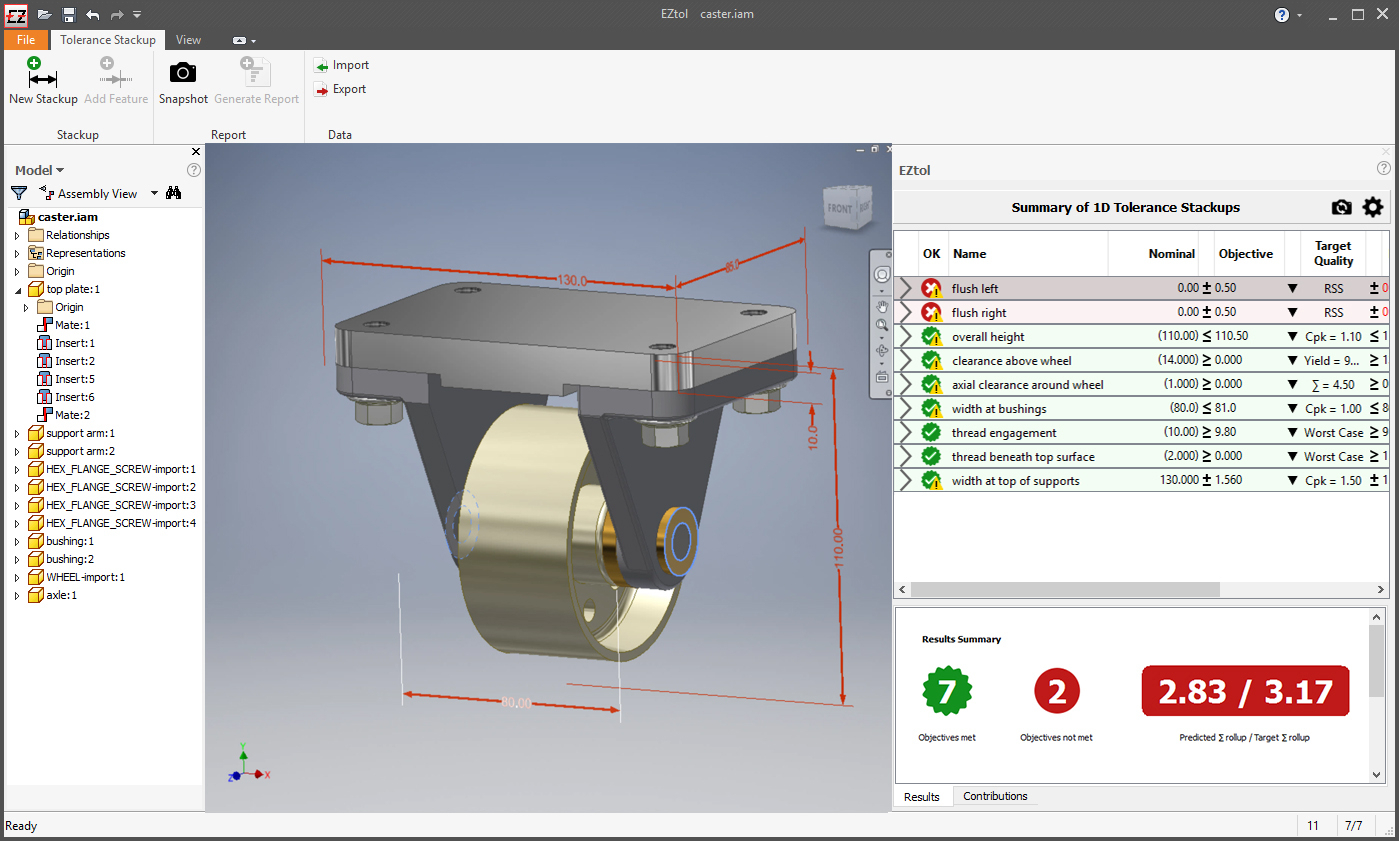
Enter these limits in the design targets for assembly dimension section. In our example we know that the assembly gap must be greater than zero, lets say 0.001” so assembly is easy, and no more than 0.022” so as not to damage the clevis while preserving functionality. Next, you should enter the upper and lower limits for your computed assembly dimension. Note the negative dimensions in this table! The calculator will sum these dimensions to compute the assembly dimension, thus a subtracted dimension in a tolerance loop should be entered as a negative value. Make sure you give each dimension a name so the results are clear. Now simply enter the dimensions and tolerances in the input table of the Five Flute tolerance analysis calculator according to your tolerance stack equation. The critical dimensions in the tolerance stackup and tolerance stack equation are shown below. This gap, shown below as assembly gap, cannot be too large or else the bolt will not maintain enough preload on the spherical bearing and the clevis will be too deformed when this bolt is tightened. In order for this assembly to work there must be a large enough gap for the washer to be inserted easily when sliding the bolt through the clevis. The assembly consists of the clevis mount, a rod end bearing, a machined spacer, and a flat washer. In this example there is a clevis mount that secures one end of an actuator by bolting to a rod end bearing. We’ll step through how to use the tolerance analysis calculator using a simple mechanical assembly example. Intro Guide - good for understanding the basics.Īdvanced Guide - good for calculating failure rates and dealing with trickier tolerance problems. We’ve written two helpful guides to bring you up to speed in case you need a refresher. How to use the Five Flute tolerance analysis calculatorįirst, it helps to know a bit about how RSS tolerance analysis works. 💡Pro tip: Bookmark it so you can find it when your next tolerance challenge pops up.

Best of all it’s a free tool that gives you visual results and tabular data output that you can share with anyone via email.

You can use it to iterate on dimensional tolerances during design, estimate manufacturer performance, and recover from manufacturing mistakes. To that end, I’m excited to introduce you to our free online tolerance analysis calculator! It’s a browser based interactive calculator for building worst case and RSS assembly tolerance stackups.

But there are so many interesting and challenging problems within these phases that we also want to help engineers solve. Our software is built to help engineering teams collaborate around all phases of development: design, build, test, and deliver. Here at Five Flute we’re obsessed with mechanical and electrical engineering challenges. William Burke Five Flute Founder & CEO Jun 20, 2022


 0 kommentar(er)
0 kommentar(er)
